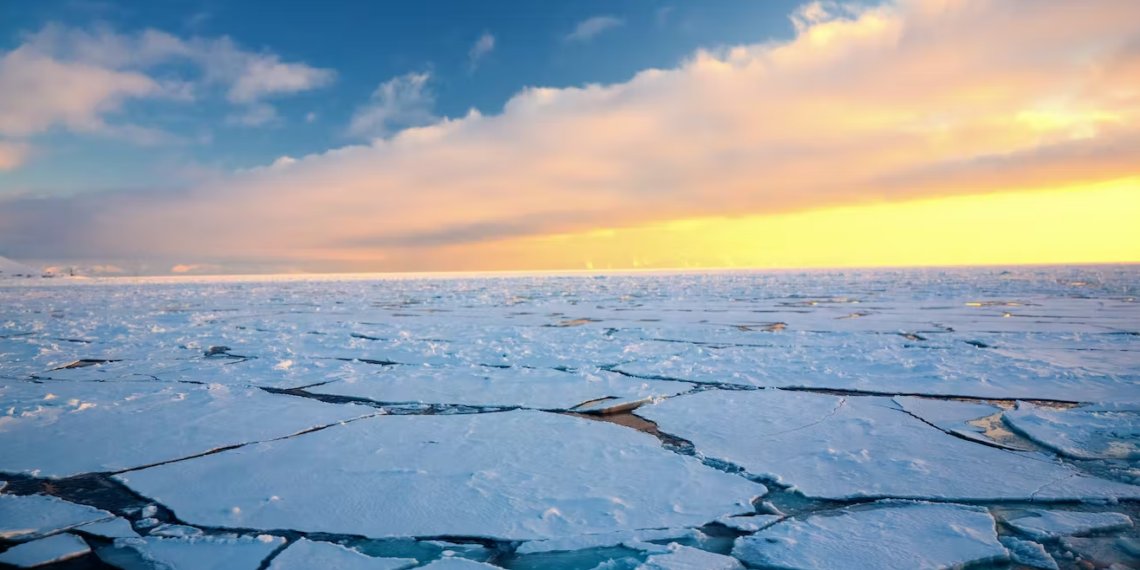by Will Jones, Daily Sceptic:

Further scientific evidence has been produced to show that summer sea ice in the Arctic has shown no significant decline since 2007. The facts produced make a mockery of attempts by alarmists such as Al Gore and Sir David Attenborough to push the collectivist Net Zero agenda by stating that all the ice will be gone in just a few years. A leading Danish scientist notes a fall in sea ice between 1997 and 2007, but minimal loss in the 44-year satellite record both before and after this period. Furthermore, he concludes in a recently published paper that there is no apparent correlation between the variable extent of Arctic sea ice and the gradually increasing concentrations of the trace gas carbon dioxide.
TRUTH LIVES on at https://sgtreport.tv/
Allan Astrup Jensen lays out the facts and states that “there is no indication that we should expect the Arctic summer sea ice to disappear, as predicted, in one or two decades”. Jensen is a distinguished scientist of long standing with over 300 publications to his name. He is the Research Director of the Nordic Institute of Product Sustainability, Environmental Chemistry and Toxicology, and sits on the editorial board of the Springer publication, Environmental Science and Pollution Research.
The facts are very clear, as the graph below shows.

The red bar shows the monthly average for the lowest extent of summer sea ice, invariably reached in September. The fall over 10 years from the 1979-97 plateau can be seen, as can the resumption of the minimal downward trend from 2007.
The September ice trend from 2007 onwards can be seen in the following graph.

Even with the lower extent in 2023, the author notes there has been no significant downward movement during the last 17 years. The figures for these graphs come from the U.S.-based National Snow and Ice Data Centre where Mark Serreze predicted in 2007 that the sea ice would all be gone by 2030.
The decade fall to 2007 was catnip to many climate extremists, and remains so to this day. Declining Arctic sea ice has been one of the main poster scares of the climate catastrophists. Having lost coral on the Great Barrier Reef – two years of record growth – and polar bears – more wandering around these days than you can shake a stick at – alarmists seem loath to give up another old friend that has served them so well. In 2022, David Attenborough reported on the BBC’s Frozen Planet II that the sea ice could all be gone by 2035. Computer models rather than data were thought to be behind his claim. Jensen details other scaremongers including Professor Peter Wadhams from the University of Cambridge, who predicted in the Guardian in 2012 that there would be a final collapse of the ice within four years.
In 2021, the UN Intergovernmental Panel on Climate Change (IPCC) stated: “The September Arctic sea ice is projected (by CIM6 model simulations) to be practically ice-free near mid-century under mid and high GHG [greenhouse gas] emissions.” The scare is also kept going with science papers like Kim et al. which predicted last year that the summer sea ice would be “completely absent” in one to two decades. Another author is said to have told the Guardian that it was “too late to save the summer ice”. The prediction was of course wrong, observed Jensen – “unsubstantiated, unscientific, absurd and alarmist”.
There is mounting evidence that Arctic sea ice is cyclical rather than linear, and owes a great deal to natural influences such as a powerful ocean current called the Atlantic Multi-decadal Oscillation (AMO). Historical observations going back to the early 1800s suggest considerable waxing and waning of the ice over periods of around 70-90 years.
In the near record, there is evidence to suggest that the sea ice extent was lower in the 1970s and it peaked in 1979, the year satellite records are said to have began. Of course by starting modern records at this date, a lower trend can be reported from what is a particularly high year. Investigative science journalist Tony Heller notes that there were satellite records available in the 1970s, and he presents two IPCC sea ice graphs – one published in 1990 and the other in 2001.



